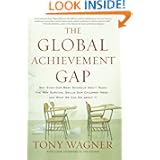
ISBN: 978-0545299886
273 PAGES
This is the first book by Blue Balliett that I have read, but it won't be the last. Hold Fast is a mystery about a family trying to reunite with their father who has suddenly disappeared without any trace. Early, the story's protagonist, is Sum and Dash's oldest child. She helps the family look after their youngest child Jubie, short for Jubilation who is literally full of joy and excitement. But as time ticks by and their father's disappearance continues, all joy and happiness diminishes.
Dash and Sum dream about moving away from their apartment in a poor neighborhood to a house. They all envision this house as a dream come true, a place to truly call their own. Bound by their shared love of literature, the family gathers together over books for reading and writing. Early admires her father's love of language. The whole family, indeed, is held together by their favorite writers and their words of hope and dreams. Their most prized possession is a notebook in which they record their authors' favorite quotes.
Langston Hughes's work guides them through what they call the Rhythms of Life. When sum goes missing, the family desperately tries to detect clues, or the rhythm behind their father's disappearance.
A novel full of language play, it makes an intimate connection with readers who literally hang on key words appearing throughout the story which eventually weave together the missing pieces of the puzzle. Set in the inner city of Chicago, the family struggles through their father's disappearance, the destruction of their apartment by those connected to his disappearance, and a homeless shelter where they experience a tenuous safe haven.
The city's largest public library serves as the backdrop for the novel. Sum works there and it seems that his disappearance is somehow connected to his job. Ever the sleuth, Early sets out to find her father and give her mother hope who is slowly fading into complete despair.
An inspirational story about the power of family, love, and the ways we communicate it, I would recommend this story for children and adults alike. Balliett's most acclaimed book is Chasing Vermeer and I plan to start there next in getting to know her work.



